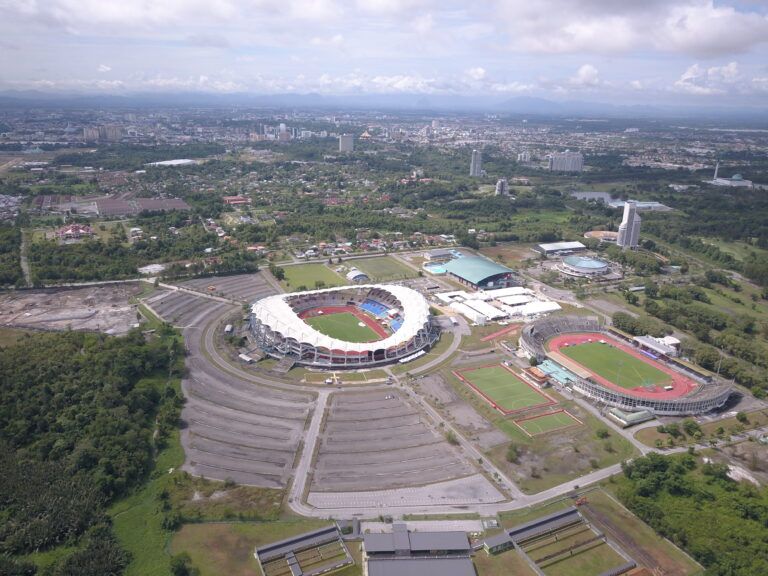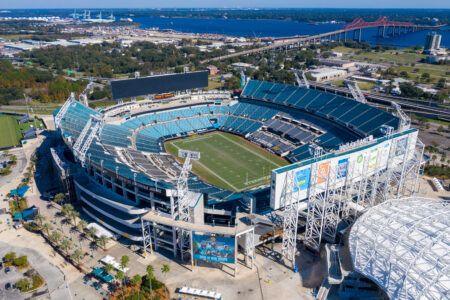For many outdoor stadium venues, lightning strikes pose a safety risk and play a significant role in disrupting operations. With sites all across the world preparing for facilities to open for some summer events, many venues and stadiums don’t have the facility to be able to close their roofs, and are left exposed to the elements. This results in events either being stopped completely or continuing without proper safety measures in place.
Malaysia, which has the third-highest lightning activity in the world, sees an increase in storms during the inter-monsoon periods of April, May, September, and October. Reports estimate that, between 2008 and 2017, there have been more than 100 fatalities in the country due to lightning strikes which is why extra precautions are needed to keep people safe.
As the largest stadium complex in Malaysia, the National Stadium Bukit Jalil has recently installed a new lightning warning system to keep the stadium operating throughout these months.
With nine soccer fields, it required an advanced system capable of covering its large area, which has been provided by meteorological equipment specialist Biral. Its BTD-200 lightning warning system is able to offer a real-time lightning warning for players and spectators and activate a warning siren when a storm approaches.
For optimal coverage, the system was mounted on the rooftop of the neighboring eight-story athlete apartment building, with a tsunami siren also being mounted for additional coverage.

The BTD-200 lightning warning system has been developed from the Biral range of professional aviation grade lightning detection systems. It detects the presence of all forms of lightning out to a range of 35km (22 miles) using a novel quasi-electrostatic detection principle. This very sensitive method detects small changes in the charge state of the atmosphere in the local area and is even able to measure the charge on falling precipitation.
To improve the chances of getting a thunderstorm threat warning, a detector should be able to alert for both distant lightning and the presence of a strong electric field within a specific area. This strong electric field is indicative of a lightning threat developing overhead, which could require immediate action.
Nathan Neal, Sales and Marketing Director at Biral, commented on the project, “We were thrilled to provide our BTD-200 for the project at the stadium in Malaysia. With such unpredictable and volatile weather during several months of the year, having specialist thunderstorm detectors in place really can be the difference between life and death. We hope this application encourages others in the leisure industry to install devices like the BTD-200 and that it can continue to make a difference at venues all over the world.”





